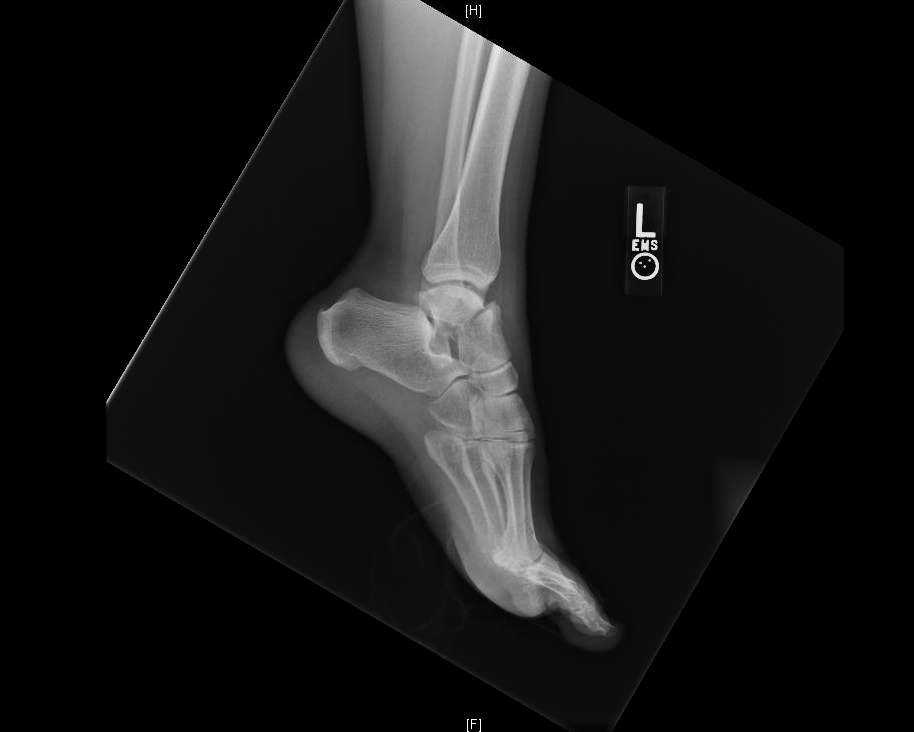Ankle Case 7 Background
The talus, in between the tibia and calcaneus, makes up the lower half of the ankle joint. It is integral for ankle stabilization and disperses weight to the rest of the foot [1]. Its position and function make it important for normal ambulation. 70% of the talus is covered by articular cartilage, and it has a fragile vascular supply [2].
Talus fractures can occur to any part of the bone. The mid-portion (or “neck”) accounts for 50% of fractures [2]. The talar head, or most distal part, accounts for 5-10% of talus fractures. The mechanism of talar head injuries is traditionally a compression force on a foot that is plantar flexed.
The lateral process, the bony area along its lateral edge, accounts for ~10% of fractures, and these are termed “snowboarder’s fractures,” as they traditionally occur during while snowboarding [2].
